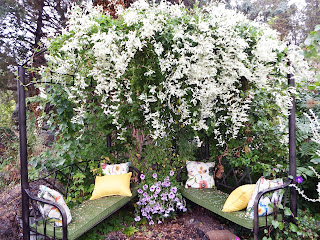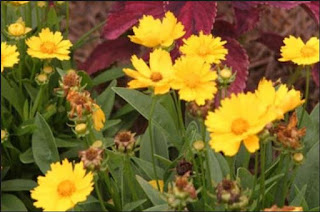If you can get over to Linfield College in McMinnville August 7 & 8, we've got some great classes for you!!!
Here's the scoop: the Oregon Master Gardener Association holds a Mini-College for gardeners every summer - all gardeners, all ages, all skills, all levels of interest. It's kind of a huge party for those of us who love to dig in the dirt, making the world a prettier, healthier place to live.
The price is really great: take three Friday or three Saturday classes for $40. There's even more fun stuff going on including a silent auction and fund-raising sales held by the OMGA chapters. Check out the list of the classes (full descriptions are on the website: http://omga.org/mini-college/).
Friday - First Session (10:15 to 11:30am):
- Fun with Hardy Succulents
- Eat More Flowers!
- Microgreens
- Grafting Apple Trees
- Seed Saving
- Seed to Supper Panel
- Biological Controls in the Garden
- Fun with Hardy Succulents (repeat of Session 1)
- Fire Resistant Plants
- Hot Weather Crops in Cool Climates
- Beat the Bugs to Your Produce
- Backyard Composting
- The Enabling Garden
- Pruning Berries and Grapes
- OR Season Tracker - Take the Nation's Pulse (part 1)
- Hellebores
- Native Plants Through the Seasons
- Preserving for Year-Round Enjoyment
- Tours (choose 1)
- Ethnobotany of the Pacific NW
- Plant Problem Scenarios
- Pruning Berries and Grapes (repeat of Session 2)
- OR Season Tracker - Take the Nation's Pulse (part 2)
- Doing Dahlias the Easy Way
- Developing New Landscape Plants
- Strawberries
- Root Crops
- Broken Pot Spiral
- Plant Problem Scenario Project
- Chewing Insect ID
- Orchids of the High Andes
- Native Pollinators
- Quince: An Unexpected Jouney
- Growing Fine Wine
- Fall Cover Crops & Mulches
- Successful Seed Starting
- Sucking Insect ID
- The Vertical Garden - All Kinds of Vines!
- Home Tree Care: The Necessary Skills
- Hot Weather Crops in Cool Climates (repeat of Friday's session 2)
- Grafted Vegetables - A New Frontier
- Weeds - We All Have Them
- Soil Sampling and Interpretation
- Biological Controls in the Garden (repeat of Friday's session 1)















